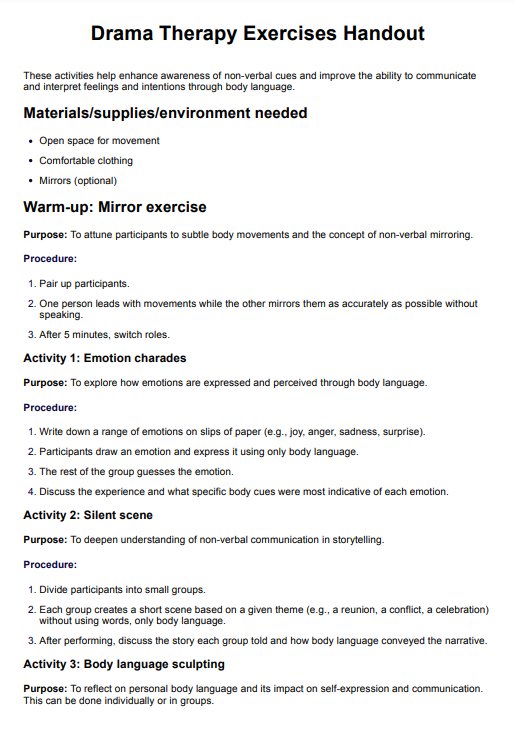Drama-based activities are therapeutic exercises that use elements of theater, such as role-playing, storytelling, improvisation, and body language exploration, to help individuals express emotions, develop social skills, and process personal experiences. Some would consider dance therapy a drama-based activity as it is a very expressive art form.

Drama Therapy Exercises Handout
Try drama therapy exercises and techniques to help your clients express and deal with emotions creatively. Use our free handout template.
Drama Therapy Exercises Handout Template
Commonly asked questions
The nine core principles of drama therapy include role-playing, embodiment, storytelling, improvisation, dramatic projection, active witnessing, empathy building, aesthetic distancing, and reflection. These principles guide drama therapists in using theater techniques to support psychological healing and personal growth.
A drama therapist uses drama and theater techniques to help clients explore emotions, resolve conflicts, and improve their well-being. They create a safe, controlled environment for self-expression, guide clients through activities, and facilitate discussions to support healing and personal development.
EHR and practice management software
Get started for free
*No credit card required
Free
$0/usd
Unlimited clients
Telehealth
1GB of storage
Client portal text
Automated billing and online payments











